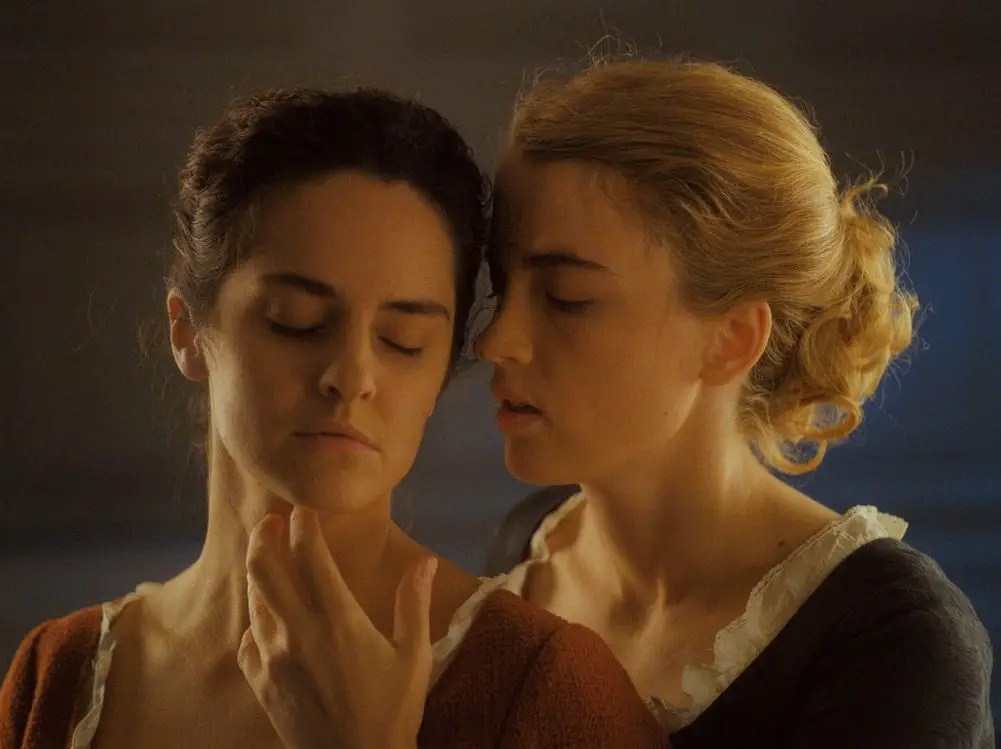“There are rules, conventions, ideas.”
“You mean there’s no life? No presence?”
This is the conversation between Marianne and Héloïse when the latter sees the portrait Marianne secretly painted of her. After Héloïse frustrated the last artist by refusing to pose for him, the young painter Marianne was commissioned by Héloïse’s mother to paint her daughter’s portrait for a Milanese suitor.
Upon seeing the first portrait, Héloïse is unimpressed, asking if that’s how Marianne actually sees her. The ensuing conversation quietly captures the essence of the film: how there is little life to be lived within the confines of convention.
Set on an island in Brittany, “Portrait of a Lady on Fire” is a gorgeous period drama and “a manifesto for the female gaze.” With its lush coastal setting and spacious 18th century estate, the movie feels like a painting comes alive as Marianne and Héloïse’s relationship evolves into one of profound love.
The bond and mutual growth we see on screen is subtle, yet precious; Marianne brings Héloïse books to read, music to listen to and tobacco to smoke — “advantages” Héloïse mentions, associating them with freedom and a life where she is not forced into a marriage she does not want — while Héloïse gives Marianne honest feedback on her portrait, something Marianne probably does not get often, given her initial shock at the comments.
The two women introduce each other to new ways of thinking and living, allowing the other space and freedom, while their lives continue to intertwine.
The shots in the film linger on Marianne and Héloïse, allowing the audience to fully absorb the two women, not hiding their presence in the movie. Unlike the recent criticism of Quentin Tarantino’s “Once Upon a Time in Hollywood” for its shallow depictions of women and Anna Paquin’s seven-line role in Martin Scorsese’s “The Irishman,” the camera doesn’t shy away from women and how their world can be just as complex as a man’s. As director Céline Sciamma says, “You’re with them, you’re not looking at them.”
Alongside these lingering shots, the lack of music throughout the film forces the viewer to sit with Héloïse and Marianne in stretches of silence that carry the incredible, yet not uncomfortable, tension between the two women. “Portrait of a Lady on Fire” finds nuance in feeling rather than the traditional gestures, acts or words of love.
The film isn’t interested in grand or bold gestures; if there was a scene in “Portrait of a Lady on Fire” like the famous sunrise scene in “Pride and Prejudice,” where Mr. Darcy finally admits his feelings for Elizabeth in a poetic overflow that leaves viewers weak in the knees, it would’ve felt wrong.
Rather, the focus is on the small, everyday things that can be monumental — the quick glances that quickly become lingering looks, the emotion behind a simple “forgive me” and the way we expose each other to new experiences and freedoms.
https://www.instagram.com/p/B9FMDa3g4QE/?utm_source=ig_web_copy_link
Yet the most nontraditional thing about the movie is how it treats this story of two women in love like a traditional romance, as it would have been incredibly easy to overemphasize the fact that this was a same-sex relationship. The conflict in the movie was never about a woman loving another woman in 18th century France; it was the fact that Marianne and Héloïse’s relationship was limited in time due to circumstances beyond their control.
Even this conflict is subtle: Marianne and Héloïse only argue about Héloïse’s imminent wedding, before accepting the futility of a concrete future together, opting to spend their last day together reminiscing their romance.
Sciamma isn’t afraid to address the supposed taboo, as if to ask with a raised eyebrow why the viewer is surprised to see a woman having her period, body hair on a female or a woman getting an abortion. And we are surprised, because we almost never see it; I can’t think of many movies that include anything about a woman and her period except to use it as some sort of plot device.
The mention of a period in “Portrait of a Lady on Fire” served little purpose; it didn’t develop the plot much, and had it been excluded, the movie wouldn’t have lost the meat of its plot arc. But this scene is absolutely critical; of course it had to be included. On an island of mostly women, someone was bound to get her period, and ignoring this fact would have been an injustice to the nature of the film and the experience of being a woman.
Weaving contemporary ideas in a genre devoted to recreating the traditions of the time, “Portrait of a Lady on Fire” stretches how we think about nontraditional love, yet Sciamma’s film never forces anything on the viewer.
There are no moments of valiant feminism or defiant quotes about how a woman can do anything a man can do; instead, we see this subtly as Marianne jumps out of the boat to save her canvases, hauls her heavy paint supplies and bags up the craggy coastline to the manor, and arranges her room and doesn’t wait to be served food. All of these small actions defy the conventions of the period, but as a 21st century viewer, they almost go unnoticed, as this is our norm now.
In “Portrait of a Lady on Fire,” Sciamma makes nuance an art and subtlety a craft. Marianne and Héloïse’s story of desire is one that transcends time and place and is not confined to a box; it is a love story — not a lesbian love story or a period romance — that somehow both leaves the viewer holding their breath in anticipation and breathing a sigh of relief at being understood.
















